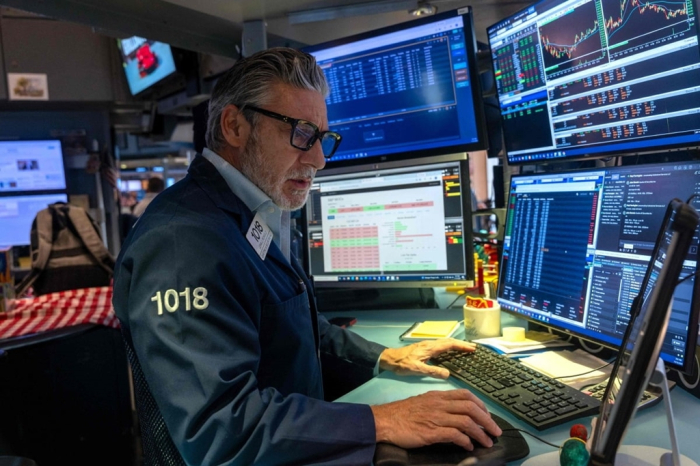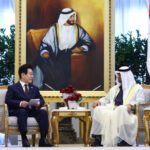
South Korean companies are drawing up next year’s business plans on the assumption that the foreign exchange rate will remain above 1,400 won per dollar, a survey of currency experts shows.
A majority of the respondents expect the era of elevated currency volatility to persist, prompting calls for deregulation and investment-friendly reforms to stabilize the currency market.
A survey of 100 treasury and foreign exchange specialists at companies and financial institutions, conducted by The Korea Economic Daily between Nov. 17 and 19, found that 58.7% of the respondents said they’re working on next year’s business plans based on an exchange rate of at least 1,400 won to the dollar.
Of the respondents, 37.1% forecast a range between 1,400 won and 1,450 won, while 17.5% expect the Korean currency to trade between 1,450 won and 1,500 won.

A small but notable 4.1% project levels above 1,500 won – a threshold associated with periods of acute external stress.
On Wednesday, the won closed at 1,465.6 per dollar in Seoul’s onshore market, down 0.3 won from the previous day’s close. The benchmark Kospi stock index closed down 0.6% at 3,929.51, while the Kosdaq ended 0.8% lower at 871.32.
WEAK-WON ERA ENTRENCHED
Two-thirds of the respondents believe the weak-won era is becoming entrenched.
The biggest driver, they said, is the relentless rise in outbound investment by individuals and institutional funds, including their buying spree of US stocks.

According to the Bank of Korea, the country’s external financial assets hit a record $2.8 trillion at the end of September, with residents’ overseas securities investment surging by $89 billion from the end of June to $1.2 trillion – the largest component of Korea’s foreign asset rise.
Foreign exchange experts said the structural backdrop offers little prospect of a meaningful turn in favor of the won.
Kim Jong-deok, chief financial officer at Daehan Shipbuilding, said Korea’s “weakening growth potential has made the current dollar-won exchange rate the new normal.”
“There’s no clear catalyst to lift the won,” he said.
Joo Tae-young, head of investment banking at KB Securities Co., noted that corporate dollar demand is likely to strengthen following the recent conclusion of the Korea-US trade and tariff negotiations.
“Given the growing external uncertainty, large Korean companies strongly feel the need to hold dollars,” he said.

MYTH THAT A WEAKER WON BOOSTS EXPORTS NO LONGER HOLDS
Industry executives said a longstanding myth that the won’s weakness versus the dollar boosts Korea’s exports no longer holds.
The Korea Economic Daily survey showed that experts are concerned about the macroeconomic impact of an exchange rate above 1,400 won.
About 61.8% said the 1,400 won range is, by and large, negative for the Korean economy – Asia’s fourth-largest, while only 6.2% saw any net benefit.
A third of the respondents said the domestic economy could “tolerate” the current foreign exchange range.
Corporate finance teams said the old formula – a weaker won equals stronger export competitiveness – has broken down.
With supply chains diversified and production increasingly dispersed overseas, a falling won often lifts the cost of imported raw materials and components, eroding profit margins rather than enhancing them, company officials said.

A bond manager at a domestic asset management firm said Korea has “moved far beyond the emerging-market phase where currency depreciation boosts manufacturing competitiveness.”
He said that the won’s weakness is now fueling capital outflows, domestic investment fatigue and weakening consumption.
Forex volatility is also beginning to sting domestic-focused businesses.
Hwang Jae-seon, a team leader at Samyang Roundsquare, an instant noodle maker, warned that rising input costs will feed through to broader inflation, inevitably weighing on household spending.
A treasury manager at a major conglomerate said: “We’re in a situation where there is no clear floor for the won. That kind of uncertainty is unambiguously negative for the economy.”
POLICY RECOMMENDATIONS
Asked about ways to stabilize the currency, 48.5% of the respondents called for easing regulations and increasing labor-market flexibility to draw corporate investment back onshore.
Korea’s overseas direct investment reached a record $34.57 billion last year, a trend that policymakers fear could deepen if the domestic investment climate does not improve.

Survey respondents also emphasized the need to reinforce Korea’s economic fundamentals, with 35.1% calling for a more disciplined approach to fiscal expansion and debt sustainability.
A third of the experts surveyed urged policies to lift productivity and reverse the decline in the country’s economic growth potential.
Other proposals included sustained capital-market revitalization measures, strengthening foreign-exchange reserves and more active market operations, and reduction of the National Pension Service (NPS) and other state pension funds’ asset allocations to overseas assets.
Analysts said the survey results reflect a broad consensus that elevated exchange-rate volatility is no longer seen as a transient shock but a structural feature of the Korean economy – one that companies now feel compelled to hard-wire into their planning.















